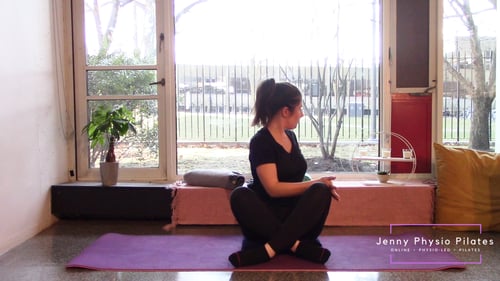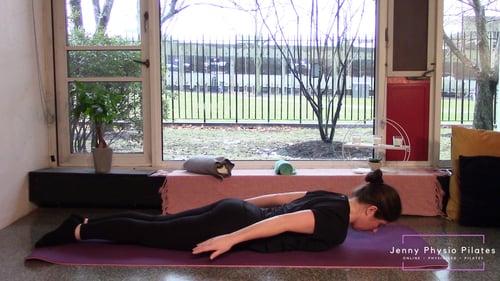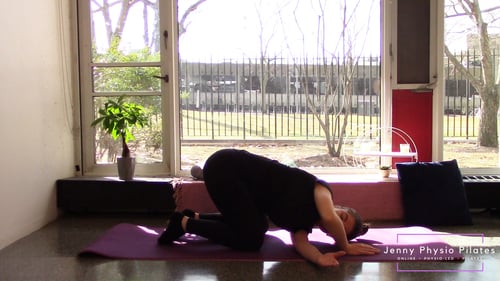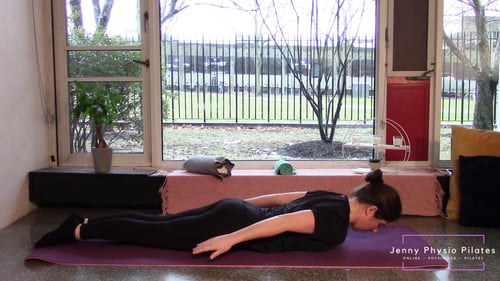Lets go through three different exercises you can do at home to:
- Keep your upper & mid-back mobile
- Keep your upper & mid-back strong
- Help prevent issues occurring in these areas.
1. Mobility Exercise (to get the spine moving!)

a) Sit up tall with your legs crossed or knees bent up in front of you hip distance apart.
b) Place the back of your right hand against the outside of your left leg. Place your left hand on the floor behind you.
c) Breathe in as you grow tall through your trunk, breathe out as you twist your body to the left.
d) See can you go further, using your breathing (as above) to help.
e) Do this for 20 seconds and then repeat to the opposite side.
2. Strengthening Exercise (to keep the muscles able to do everyday activities!)

a) Lie face down with your arms by your side and your tailbone tucked underneath you.
b) Gently engage your core like you were ever so slightly tightening a belt.
c) Lift your arms up and reach towards your toes. Hold this for the count of 10. You should feel your arms and the middle of your back working.
d) Lower the arms.
e) Repeat 5 times.
*Members of JennyPhysioPilates click here to see a detailed video on how to do the exercise correctly & how to make adjustments for certain injuries or issues.*
3. Stretching Exercise (to keep the muscles mobile & flexible!)

a) Start on your hands and knees. Sit your hips back towards your heels.
b) Lift your left hand off the floor and loop it underneath your right armpit, twisting your body as you do so.
c) Lower your left shoulder as close to the floor as you can. Keep reaching with your left arm.
d) Keep breathing as you hold this for 20 seconds. Each time you exhale see can you reach a little further.
e) Repeat going to the opposite side.
*Members of JennyPhysioPilates click here to see a detailed video on how to do the exercise correctly & how to make adjustments for certain injuries or issues.*
Note: You should not feel any pain doing these exercises. You may feel the area working or stretching but it should not be painful - please stop the exercise immediately if pain occurs.




